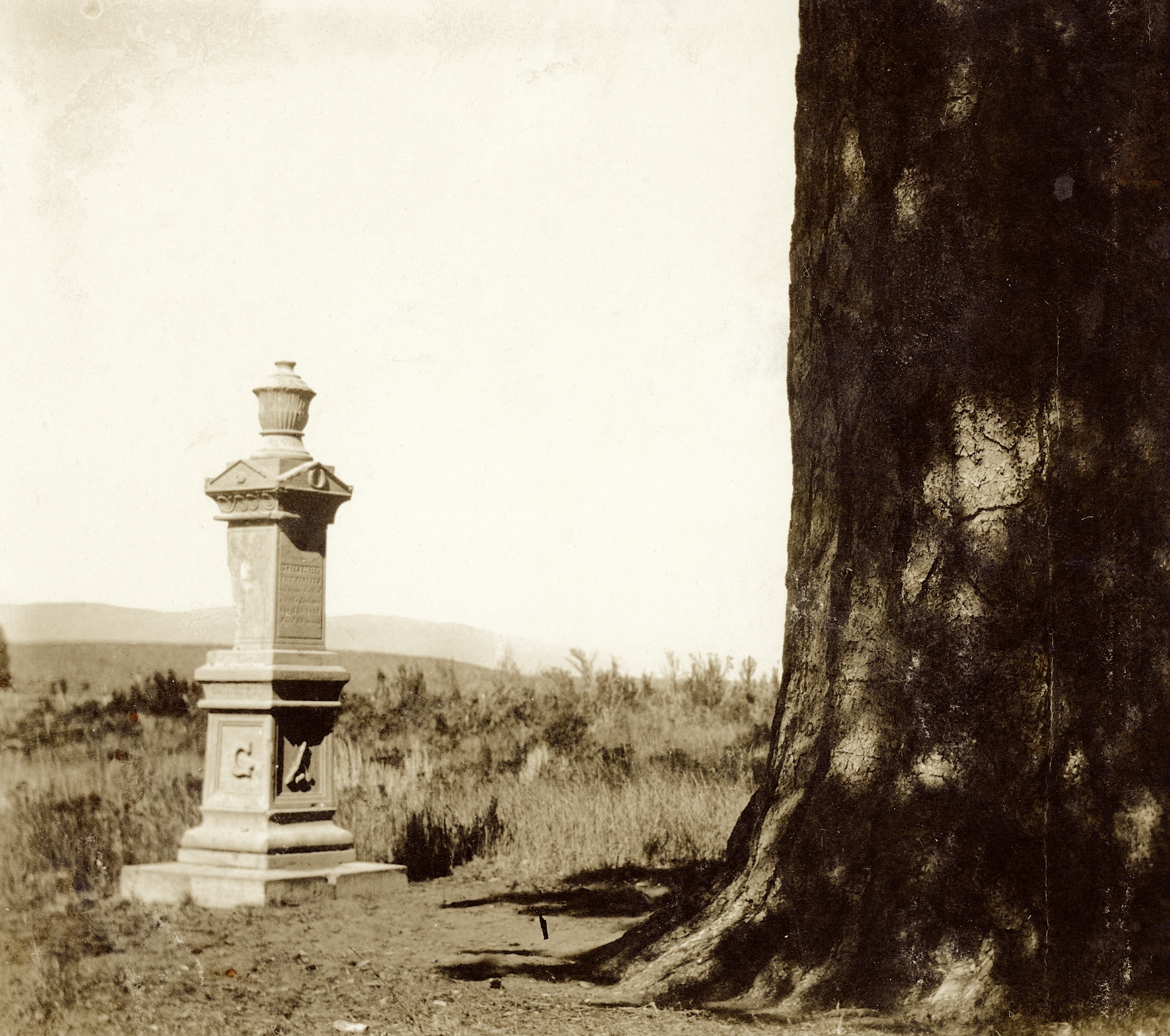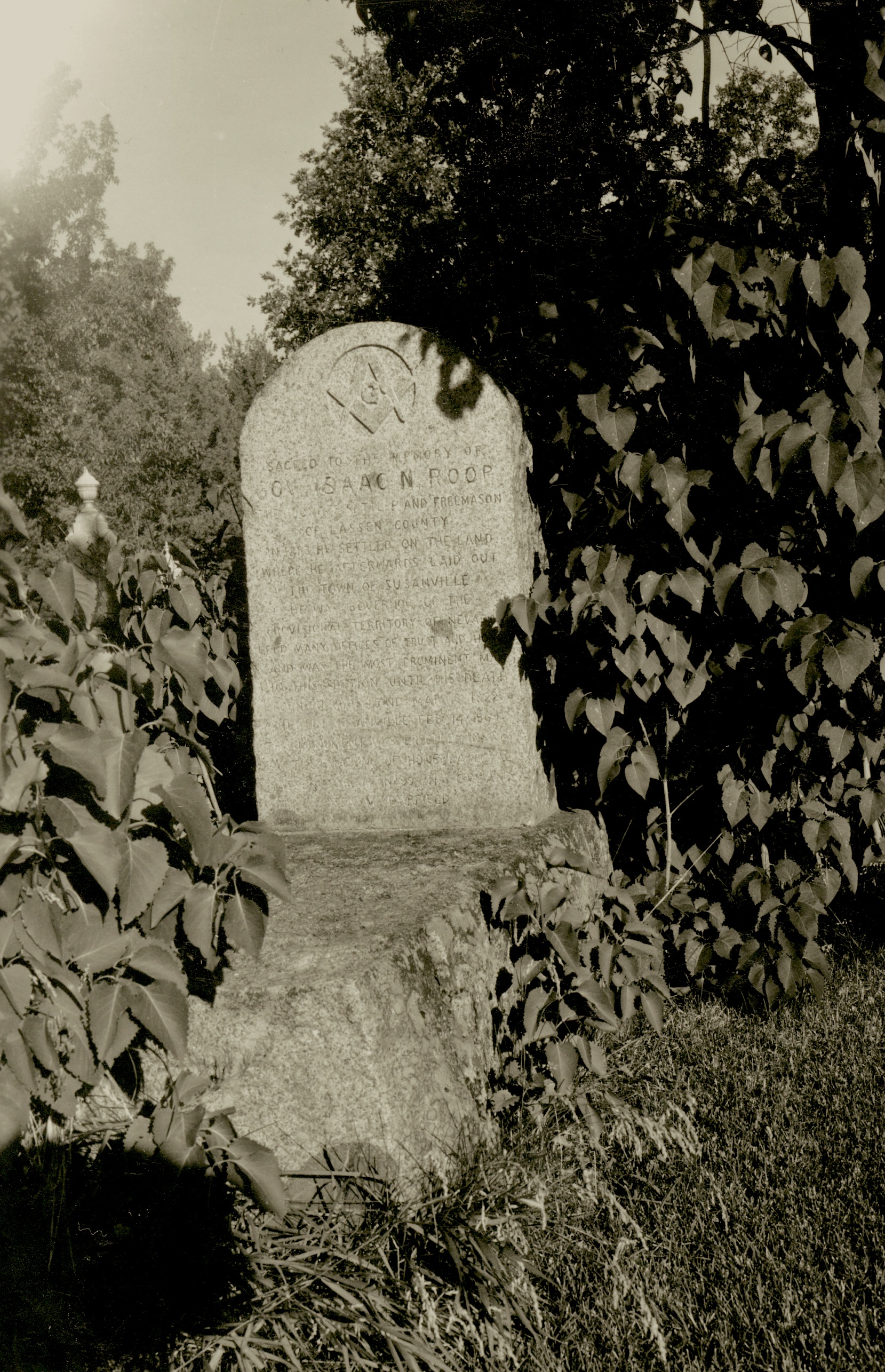
There are some, past and present, that have strong opinions of these two men of the pioneer era. Yet, they both shared something in common when they passed away—neither one had a tombstone for some time.
Peter Lassen died on April 25, 1859 while on a mining expedition in the Black Rock Desert. His remains were later brought back and he was buried near a majestic Ponderosa pine tree, where it was stated it was the first place he camped at in the Honey Lake Valley. However, it should be noted, Lassen a bachelor had no family, who would normally be responsible in marking the grave.. However, Lassen did belong to the fraternal order of Masons. On June 24, 1862 that organization placed a ten-foot tall monument made of native volcanic ash at Lassen’s grave.

Isaac Roop who died on February 14, 1869, had three children, though though one son died in the Civil War. However, his daughter, Susan, the town’s namesake resided. there. According to Asa Fairfield, his daughter purchased a tombstone, which ws a destroyed in a fire. This I always found peculiar, a piece of stone demolished by fire. Was this just a ploy by Fairfield to cover for the family, when other factors, such as the family did not have financial means for a tombstone. Considering Roop’s status, and his daughter was expected to have not just a gravestone, but a fitting monument as the founder of Susanville?
Whatever the case may be, nearly five decades after Roop’s death, it bothered Lassen County historian, Asa M. Fairfield, that his grave remained unmarked. Fairfield recruited the Masonic lodges of Janesville and Susanville and the Lassen Parlor of the Native Sons of the Golden West to rectify the situation. A large granite monument was placed at Roop’s grave. On California’s Admission Day, 1914 witnessed the unveiling of the Roop Monument. Fairfield was disappointed that only about 70 people attended the ceremony.